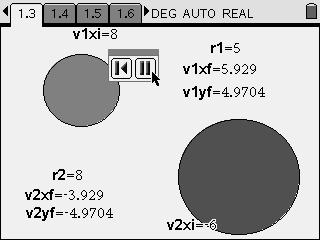Two-Dimensional Collisions

Science: Physics: Work, Energy and Momentum
9-12
45 Minutes
1.7
Lessons
TNS
Two-Dimensional Collisions
Activity Overview
Students observe animations of two-dimensional elastic collisions of spheres and then calculate linear momenta and kinetic energies.
Download Files
Teacher Files
Student Files
Science: Physics: Work, Energy and Momentum
9-12
45 Minutes
1.7
Lessons
TNS
iPad is a trademark of Apple Inc., registered in the U.S. and other countries.
Vernier EasyData,Vernier EasyLink and Vernier EasyTemp are registered trademarks of Vernier Science Education.
Vernier EasyData,Vernier EasyLink and Vernier EasyTemp are registered trademarks of Vernier Science Education.

